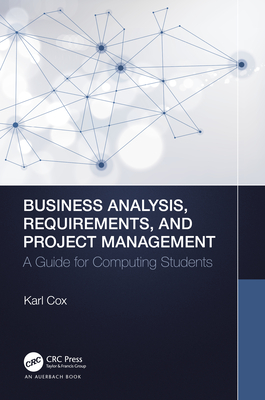Business Analysis, Requirements, and Project Management: A Guide for Computing Students
暫譯: 商業分析、需求與專案管理:計算機科學學生指南
Cox, Karl
- 出版商: Auerbach Publication
- 出版日期: 2021-10-26
- 售價: $2,510
- 貴賓價: 9.5 折 $2,385
- 語言: 英文
- 頁數: 200
- 裝訂: Quality Paper - also called trade paper
- ISBN: 0367766841
- ISBN-13: 9780367766849
-
相關分類:
專案管理 PM
海外代購書籍(需單獨結帳)
相關主題
商品描述
IT projects emerge from a business need. In practice, software developers must accomplish two big things before an IT project can begin: find out what you need to do (i.e., analyse business requirements) and plan out how to do it (i.e., project management). The biggest problem in IT projects is delivering the wrong product because IT people do not understand what business people require. This practical textbook teaches computer science students how to manage and deliver IT projects by linking business and IT requirements with project management in an incremental and straightforward approach.
Business Analysis, Requirements, and Project Management: A Guide for Computing Students presents an approach to analysis management that scales the business perspective. It takes a business process view of a business proposal as a model and explains how to structure a technical problem into a recognisable pattern with problem frames. It shows how to identify core transactions and model them as use cases to create a requirements table useful to designers and coders. Linked to the analysis are three management tools: the product breakdown structure (PBS), the Gantt chart, and the Kanban board. The PBS is derived in part from the problem frame. The Gantt chart emerges from the PBS and ensures the key requirements are addressed by reference to use cases. The Kanban board is especially useful in Task Driven Development, which the text covers.
This textbook consists of two interleaving parts and features a single case study. Part one addresses the business and requirements perspective. The second integrates core project management approaches and explains how both requirements and management are connected. The remainder of the book is appendices, the first of which provides solutions to the exercises presented in each chapter. The second appendix puts together much of the documentation for the case study into one place. The case study presents a real-word business scenario to expose students to professional practice.
商品描述(中文翻譯)
IT 專案源於商業需求。在實務中,軟體開發人員必須在 IT 專案開始之前完成兩件大事:找出需要做什麼(即分析商業需求)和規劃如何去做(即專案管理)。IT 專案中最大的問題是交付錯誤的產品,因為 IT 人員不理解商業人員的需求。本書是一本實用的教科書,教導計算機科學學生如何管理和交付 IT 專案,通過將商業和 IT 需求與專案管理連結,以漸進且簡單的方式進行。
《商業分析、需求與專案管理:計算機學生指南》提出了一種可擴展商業視角的分析管理方法。它將商業提案視為模型的商業流程觀點,並解釋如何將技術問題結構化為可識別的模式,使用問題框架。它展示了如何識別核心交易並將其建模為用例,以創建對設計師和程式設計師有用的需求表。與分析相關的有三種管理工具:產品分解結構(PBS)、甘特圖和看板。PBS 部分源自問題框架。甘特圖則從 PBS 中產生,並確保通過參考用例來解決關鍵需求。看板在任務驅動開發中特別有用,這也是本書所涵蓋的內容。
本教科書由兩個交錯的部分組成,並包含一個案例研究。第一部分針對商業和需求視角。第二部分整合核心專案管理方法,並解釋需求與管理之間的聯繫。書籍的其餘部分為附錄,第一個附錄提供每章所呈現練習的解答。第二個附錄將案例研究的許多文檔集中在一起。案例研究呈現一個真實的商業情境,以使學生接觸專業實踐。
作者簡介
作者簡介(中文翻譯)
Karl Cox 是布萊頓大學計算機科學的高級講師,教授商業分析、建模、需求和管理。在此之前,他曾在澳大利亞的NICTA Ltd擔任高級研究科學家,並共同擔任一家精品管理諮詢公司的聯合董事。Cox博士在學術文獻中發表了大量作品,最近轉向撰寫對學生有用的書籍,因為他注意到在軟體生命週期中有些領域未能滿足學生在學習上的即時需求。Cox博士也是環境和健康的積極演講者。他曾為世界自然科學基金會就基因改造生物(GMO)、數位成癮和電子煙的風險等主題發表過多次演講。























